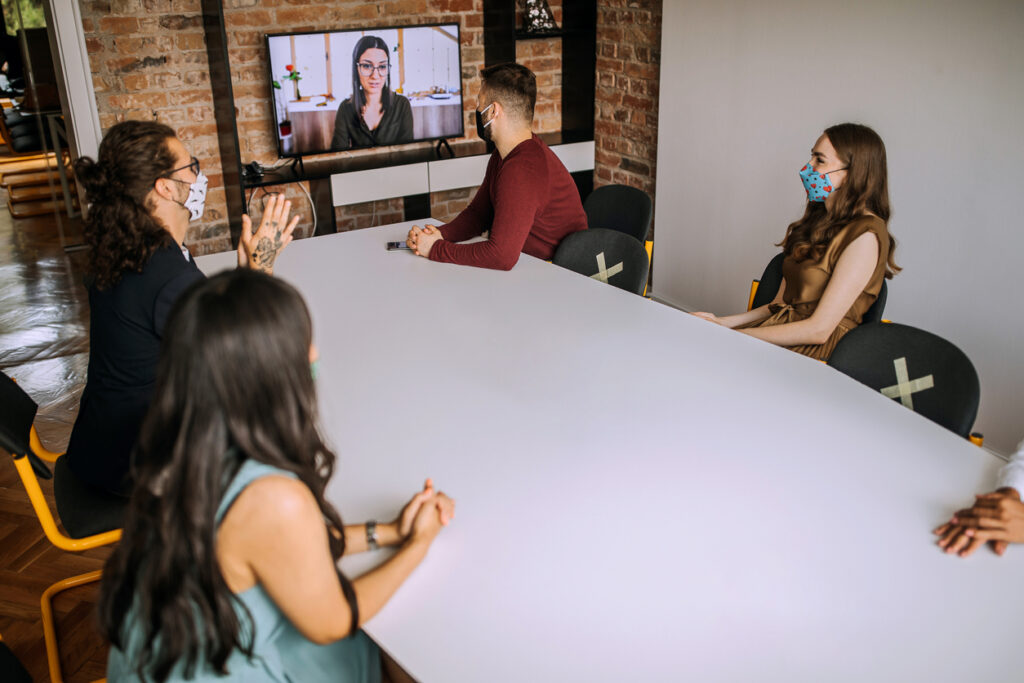The past year was one of change for workforces across the globe, transforming our daily routines. For many, this meant working from home and collaborating virtually. Now we are preparing for another monumental shift, as businesses prepare for the return to the office.
Central to our culture at Intuit QuickBooks is putting the wellbeing of our employees first. When we were considering our next steps, we knew that we had to shape our ‘back to the office’ plan with our employees’ feedback at its heart. We recently ran an employee survey which found that only 14% of our employees would like to work remotely full-time, but just 6% want to go back to the office full-time after the restrictions are lifted. Listening to our employees’ feedback, we knew flexibility and choice was key to our employees, and so our hybrid model was born.
Moving forward, all businesses will need to carve out a new, more flexible way of working that works for both employers and employees.
We are now asking our employees to go into the office an average of two to three times a week, with individual teams deciding how and when they want to collaborate together. It’s early days, and we are committed to continually test, review, gain feedback and make changes.
What was clear from this process is there’s no one-size-fits-all approach, and HR leaders should look to build a new way of working that is tailored to the needs of their staff. In doing so, there are three key things to consider: working spaces, making connections and recruiting and retaining staff.
1. The right space
Most employees did not have their homes set up for home working before the pandemic hit, and many have had to muddle through the last year without a home office or even a desk. Having the right space set up to spark creativity both in the office and at home will be vital to making a success of a hybrid model.
Home working has its benefits – our survey found that 90% of our employees said they appreciate not having to commute, and 60% said they have more uninterrupted work time. A lot of businesses are sending their employees monitors, desk chairs and other equipment. If you are able to spare it, offering office equipment will allow employees a more comfortable home working experience, which will increase their positivity and productivity.
Establishing a hybrid working model is a chance to rethink the space in your office and set it up to encourage teamwork and collaboration. For example, we expect to have fewer individual offices and to create more flexible spaces to enable interaction and innovation. Finding what fits best will be a learning curve – keep testing and experimenting over time, to work out what works best for you as a company.
2. Bolstering connections
Eight in ten of our employees told us that the biggest drawback of working from home was feeling isolated from their colleagues and the community, and many felt that collaborative work was more difficult. One of the challenges businesses will now face will be how to maintain a strong sense of connection and company culture through the transition to a hybrid model, with more people working from home.
Allowing employees time to relax with their teams and colleagues will improve their relationships at work and increase motivation. Our survey found that 56% of our employees missed the ability to have informal ‘hallway’ conversations and interactions with their colleagues in the office, so a key focus for management teams should be facilitating this.
Management teams must make sure the office is a place where employees feel welcomed and part of the team. It will be especially important to make those employees who were recruited during the lockdown feel included as much as possible, through holding informal team meetings or lunches (restrictions permitting) and encouraging personal check-ins.
As we start this next phase, listening to your employees will be vital to bolster your team culture. Leaders should take the time to carry out surveys (though not too many!) and hold team discussions, to ensure they are catering to the needs of their workforce and providing the best experience possible in the transition back to the office.
3. Ensuring employee attraction and retention
Recruiting and retaining top, diverse talent is the first step in future-proofing a business, and to appeal to this talent, a business’s working model must be attractive.
We expect to see a huge shift in the way businesses across the world are run. With most firms formulating ways of working that fit in better with their employees’ lives, businesses that remain inflexible in terms of working models run the risk of losing out on talent to more forward-thinking employers.
It is vital to listen to what your employees want when formulating a plan for new ways of working. Our survey found that 80% of our employees said they would prefer a hybrid workplace model that brings together the power of virtual collaboration with the benefit of some on-site interaction, so we responded in kind.
We have known for some time now that the pandemic will change the way we work forever. Moving forward, all businesses will need to carve out a new, more flexible way of working that works for both employers and employees. Management teams should see this as an opportunity to switch up the way things have worked in the past and fine-tune new practices.
[cm_form form_id=’cm_65a14c3f5da64′]
The past year has challenged and changed our relationships with work and how many of us do our jobs, and it’s fair to say there’s no going back now. The process will be new for a lot of companies, and there certainly isn’t a perfect solution, so be prepared to be agile and adapt along the way.
Interested in this topic? Read Leadership in the hybrid world of work.







